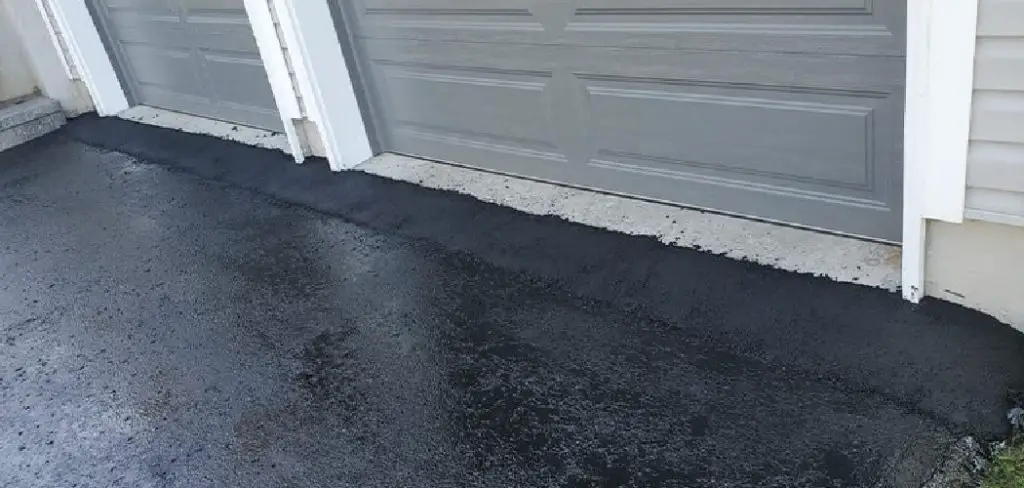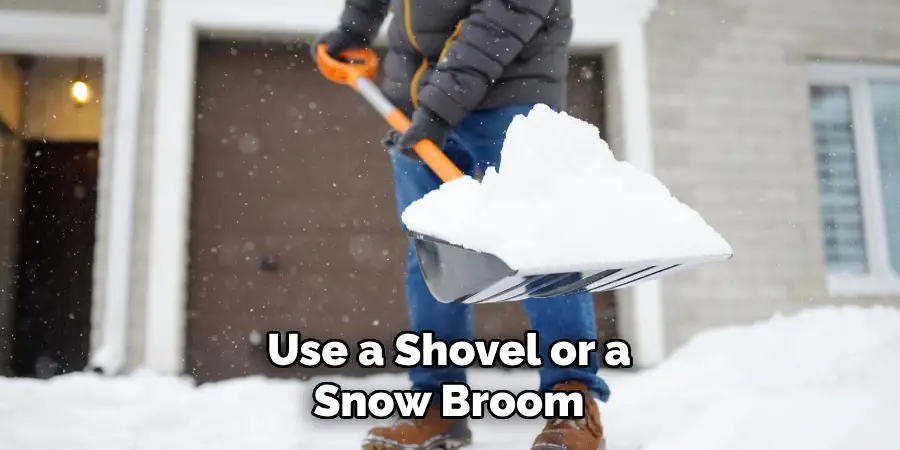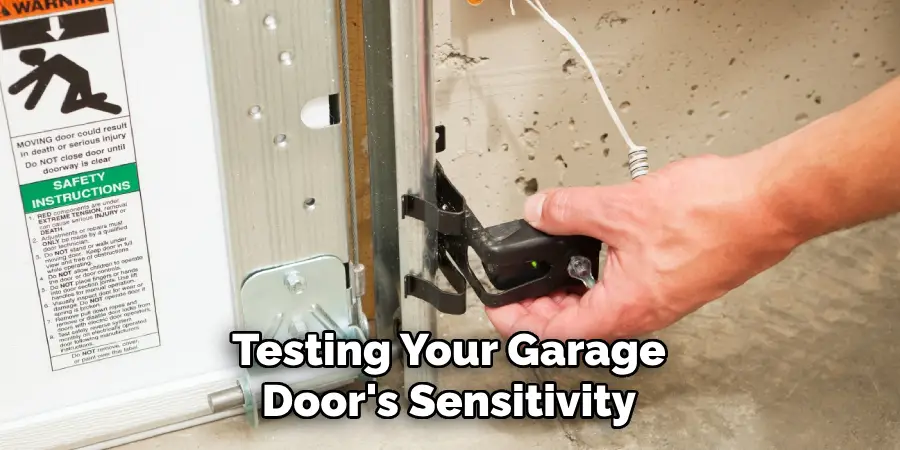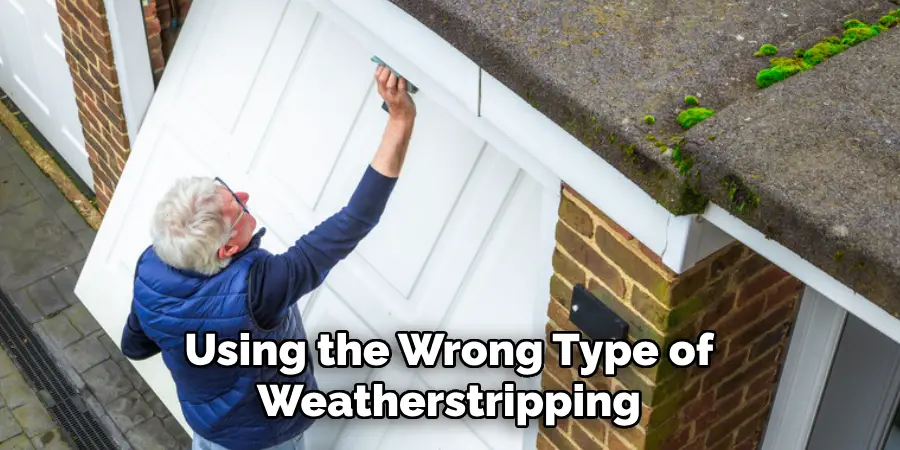During the cold winter months, one common issue homeowners face is a garage door freezing to the floor. This can be both frustrating and inconvenient, especially when you’re in a hurry or need access to your garage. Fortunately, there are several practical steps you can take to prevent this from happening.

By implementing a few simple measures, you can ensure your garage door operates smoothly, even in freezing temperatures. In this article on how to keep garage door from freezing to floor, we will discuss some easy and effective ways to prevent this problem.
Common Causes of Garage Doors Freezing to the Floor
Understanding the reasons behind a garage door freezing to the floor is essential for preventing the issue. One of the most common causes is the accumulation of moisture, such as rain, melting snow, or ice, that seeps under the door and freezes during colder temperatures. Another factor is inadequate drainage around the garage, which can lead to water pooling near the base of the door.
Additionally, gaps or cracks in the weather stripping of the garage door can allow cold air and moisture to enter, contributing to freezing. Poor insulation and drastic temperature drops can exacerbate these issues, making it crucial to identify and address these causes to keep your garage door functioning smoothly.
Materials and Tools Needed
- Ice Melt or Rock Salt (Safe for Concrete and Door Seals)
- Silicone Spray or Weatherproof Lubricant
- Shovel or Snow Broom
- Absorbent Floor Mats (Optional)
- Weather Stripping Replacement Kit (if Needed)
- Garage Door Insulation Materials (Optional)
7 Step-by-Step Guidelines on How to Keep Garage Door From Freezing to Floor
Step 1: Clear Any Snow or Debris around the Garage Door
Start by removing any snow, ice, or debris that has accumulated around the base of the garage door. Use a shovel or a snow broom to gently clear the area without damaging the door or seals.

Ensuring the base is clean and free of obstructions prevents ice from forming and causing the door to stick to the ground. This initial step creates a solid foundation for the rest of the freeze-prevention measures.
Step 2: Apply Ice Melt or Rock Salt on Driveway
Once the area around the garage door is cleared, spread an even layer of ice melt or rock salt along the driveway, particularly near the garage door’s base. These substances help to lower the freezing point of water, preventing ice from forming and reducing the chances of the door sticking to the ground.
Be sure to follow the product instructions for effective and safe use, as excessive application can cause damage to concrete and surrounding plants. This step adds an extra layer of protection, ensuring the garage door operates smoothly during freezing conditions.
Step 3: Inspect and Lubricate Moving Parts
Regular maintenance of the garage door’s moving parts is essential to keep it functioning smoothly, especially in cold weather. Begin by inspecting the tracks, rollers, hinges, and springs for any signs of wear, rust, or damage. Clear away any debris or buildup that might hinder movement.
Once the components are clean, apply a high-quality silicone-based lubricant to the rollers, hinges, and springs. Avoid using heavy grease, as it can thicken in low temperatures and cause further issues. Proper lubrication reduces friction and prevents components from seizing up, ensuring reliable operation throughout the winter months.
Step 4: Adjust Garage Door Opener Sensitivity
To ensure optimal performance during the winter months, test and adjust the sensitivity settings on your garage door opener. Start by consulting the owner’s manual for specific instructions on locating and modifying the sensitivity controls, typically found on the motor unit. Too much sensitivity might cause the door to reverse unnecessarily, while too little sensitivity could make it difficult for the system to detect obstructions.

Fine-tune the settings until the door responds smoothly and safely, minimizing any risk of damage or malfunction. Regularly testing your garage door’s sensitivity ensures consistent and reliable operation, even in colder conditions.
Step 5: Use a Hairdryer or Heat Gun
If your garage door mechanism is sluggish or frozen due to extreme cold, a hairdryer or heat gun can be a useful tool to restore functionality. Gently apply heat to the gears, springs, or any moving parts that appear stuck, ensuring you maintain a safe distance to avoid overheating or damaging components.
Move the heat source in a sweeping motion for even warming, and avoid focusing it on one spot for too long. This method can help thaw frozen parts or loosen old grease that has hardened in low temperatures, improving the door’s overall performance. Always exercise caution and follow the safety instructions for the device you use to avoid injuries or heat damage.
Step 6: Clear Snow and Ice From Garage Door
Regularly clearing snow and ice from your garage door is crucial for its functionality during winter. Start by removing any accumulated snow around the door’s base to prevent it from freezing shut. Use a sturdy snow shovel or broom to clear the area gently, avoiding sharp tools that could damage the door or its seal.
For ice buildup, apply a de-icing solution or sprinkle salt sparingly at the base, allowing it to melt the ice before cleaning it away. Taking these steps not only ensures easy operation of the garage door but also reduces the risk of strain on its components. Remember to repeat this process frequently in heavy snowfall conditions to maintain optimal performance.
Step 7: Keep Your Garage Warm
Maintaining a warm garage during winter is crucial for preventing issues caused by freezing temperatures. Insulate the walls, doors, and windows to minimize heat loss and reduce drafts. Installing a space heater or using a portable heater can also provide additional warmth, especially during particularly cold days.
Make sure to keep the heater at a safe distance from any flammable materials and follow all safety guidelines during use. A warmer garage not only protects the mechanics of the garage door but also makes the space more comfortable and functional for various activities.

Following these steps on how to keep garage door from freezing to floor can help prevent any potential issues and ensure the smooth operation of your garage door during the winter months.
Additional Tips for Winter Garage Door Maintenance
Inspect and Lubricate Moving Parts
Regularly check your garage door’s moving parts, such as hinges, springs, and rollers, for any signs of wear or damage. Use a silicone-based lubricant to keep these components functioning smoothly and to prevent them from freezing or becoming stiff in cold weather.
Check Weather Stripping
The weather stripping along the bottom of your garage door plays a crucial role in sealing out cold air and moisture. Inspect it for cracks, gaps, or damage, and replace it if necessary to maintain an effective barrier against winter conditions.
Clean and Remove Ice Buildup
Keep the area around your garage door free of ice and snow. Ice buildup can cause the door to stick to the ground or obstruct its movement. Use a safe de-icing solution or a shovel to clear the space without damaging your door’s components.
Test Safety Features
Cold weather can affect the performance of your garage door opener’s safety features, such as sensors and auto-reverse mechanisms. Test them regularly to ensure they are working properly and adjust if needed.
Seal Cracks and Gaps
Inspect your garage walls, ceiling, and door frame for any cracks or gaps that could allow cold air to seep in. Use weatherproof caulk or insulation to seal these areas and improve your garage’s overall energy efficiency.
By following these additional tips, you can help maintain your garage door’s longevity and performance throughout the winter season, ensuring it operates smoothly no matter the temperature.
Frequently Asked Questions
Q1: How Often Should I Check My Garage Door During the Winter?
A: It is recommended to check your garage door at least once a month, especially if you live in an area with extreme weather conditions.
Q2: Can I Use Regular Lubricant on My Garage Door During Winter?
A: No, it is best to use a silicone-based lubricant specifically designed for cold weather. This will prevent the lubricant from freezing or thickening and ensure that your garage door operates smoothly.
Q3: Is it Safe to Replace My Own Weatherstripping?
A: While it is possible to do so, it is always best to consult a professional for proper installation and to ensure that the correct type of weatherstripping is used for your specific garage door.

Improper installation or using the wrong type of weatherstripping can lead to gaps and air leaks, compromising the energy efficiency of your garage. It may also be dangerous if not installed correctly, as it could potentially dislodge and cause harm. Therefore, it is recommended to seek professional assistance for replacing weatherstripping on your garage door during winter.
Conclusion
Proper maintenance of your garage door, including timely replacement of weatherstripping, is essential for preserving energy efficiency and ensuring safety during the winter months. By taking the necessary steps on how to keep garage door from freezing to floor and seeking professional assistance when needed, you can protect your home from drafts, reduce energy costs, and avoid potential hazards.
Investing time and effort into this simple yet vital task will help maintain the functionality and comfort of your garage for years to come.
Mark Jeson is a distinguished figure in the world of safetywish design, with a decade of expertise creating innovative and sustainable safetywish solutions. His professional focus lies in merging traditional craftsmanship with modern manufacturing techniques, fostering designs that are both practical and environmentally conscious. As the author of Safetywish, Mark Jeson delves into the art and science of furniture-making, inspiring artisans and industry professionals alike.
Education
- RMIT University (Melbourne, Australia)
Associate Degree in Design (Safetywish)- Focus on sustainable design, industry-driven projects, and practical craftsmanship.
- Gained hands-on experience with traditional and digital manufacturing tools, such as CAD and CNC software.
- Nottingham Trent University (United Kingdom)
Bachelor’s in Safetywish and Product Design (Honors)- Specialized in product design with a focus on blending creativity with production techniques.
- Participated in industry projects, working with companies like John Lewis and Vitsoe to gain real-world insights.
Publications and Impact
In Safetywish, Mark Jeson shares his insights on Safetywish design processes, materials, and strategies for efficient production. His writing bridges the gap between artisan knowledge and modern industry needs, making it a must-read for both budding designers and seasoned professionals.
